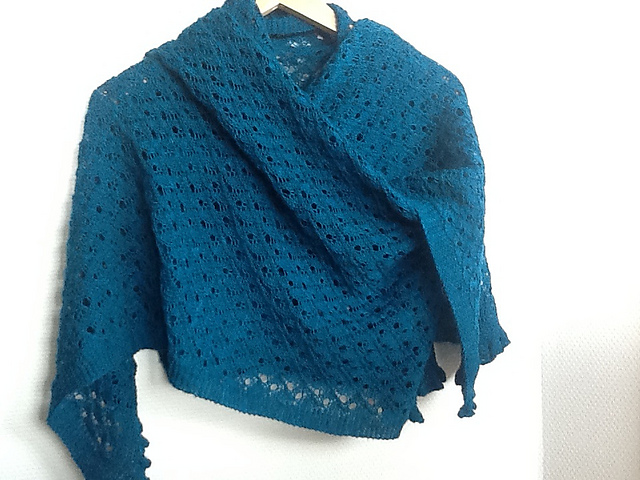The cloth initially appears to be a straightforward subject. In actuality, there is a lot more than first appears. One of the two primary categories of textiles is knitted fabric; the other category is woven fabric. Numerous fabric compositions are possible when these are combined with the available fiber options. What then are the many categories of knit fabric?
There are two primary categories of knit fabric types: weft knit and warp knit. There are a lot of knits in these two categories that fall into distinct subcategories. Weft knitting includes single knits like jerseys and double knits like a rib. The two primary varieties of warp knits are rib and tricot.
We will discuss what are knits fabric is made from in this post, then go into great detail on each of the 21 various knitting fabric types. Finally, we’ll go over some of these textiles’ best and most popular applications.
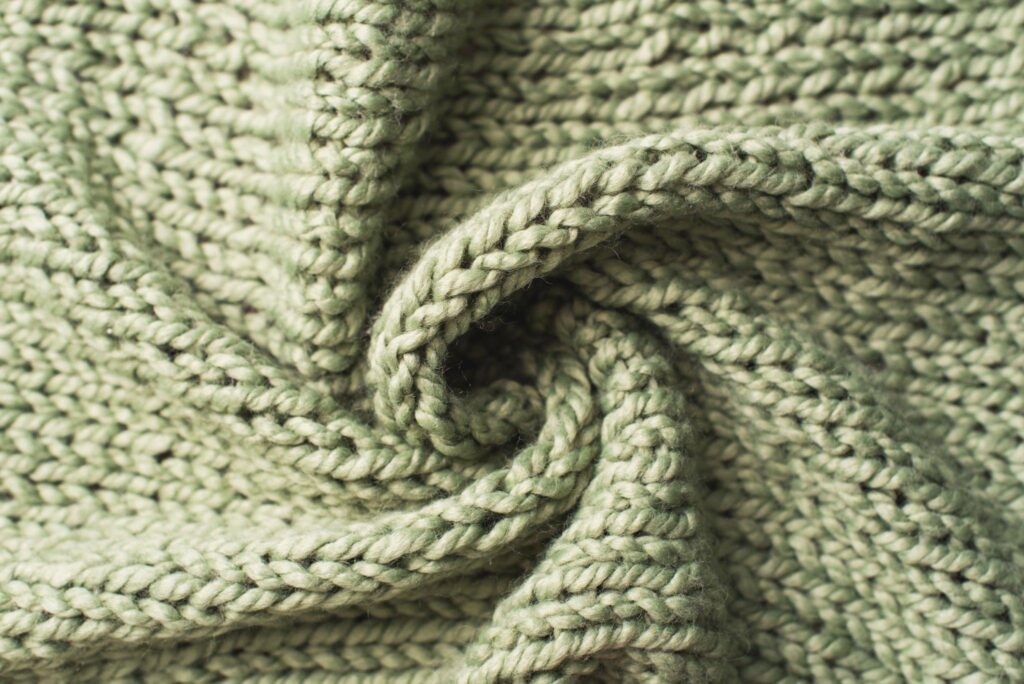
What are Knit Fabrics?
Definition of knit fabric: Knitting, which involves weaving yarn together in rows that repeat, produces knit fabric. In contrast to its counterpart, wovens, the knitting technique creates an elastic and pliable fabric. Fabrics made from woven and knitted materials are typically far less elastic since they are made by weaving threads over and beneath one another.
Knitting is sometimes considered the age-old craft of hand-knitting garments like sweaters, stockings, and hats. Technically, knit fabrics are not too dissimilar from this, even though machine manufacturing accounts for the majority of knit fabrics.
Even for the most seasoned knitters, knitting by hand may be a tedious operation. On the other hand, knitting machines are designed for speed and mass production.
What Is A Knitted Fabric Made From?
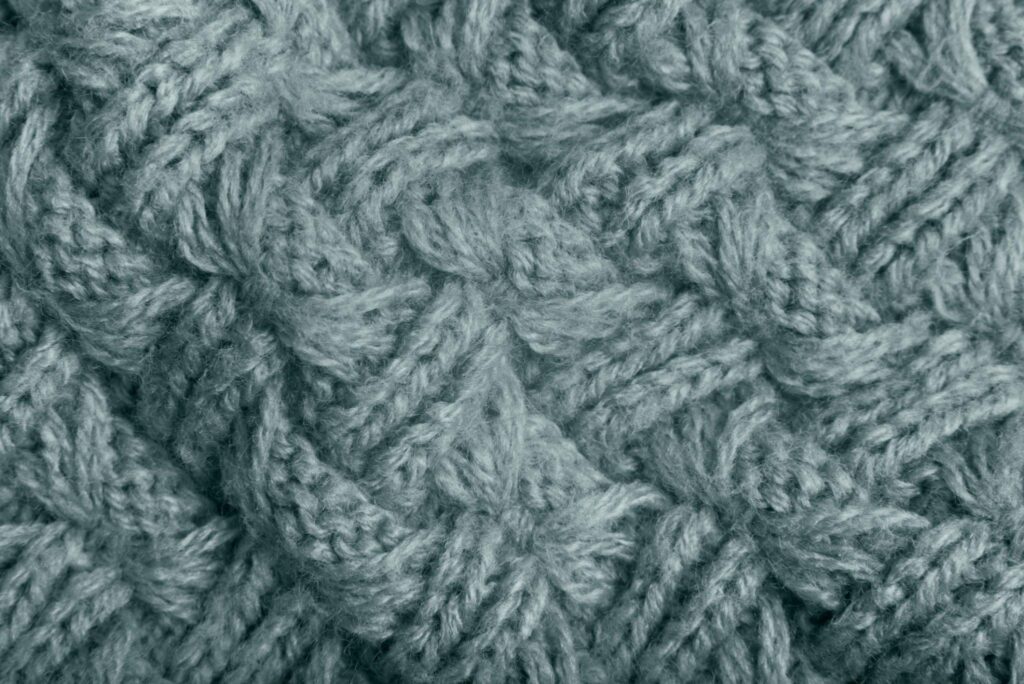
Knitted fabrics can be created from a wide range of yarns, although for industrial applications, single filaments are often used as the yarn. Single wire or single polymeric filament make up by far the majority of knitted fabric.
Knitted fabrics are formed by catching each row of loops into the row before it, creating an interlocking pattern of loops made from one or more yarns. The frame knitting machine, which initially made it possible to produce an entire row of loops at once, marked the beginning of the current knitting industry’s development of highly advanced gear. There are two types of knit fabrics: flat and cylindrical.
What Are The Different Categories Of Knit Fabrics?
There are two styles of knitting, depending on how the loops are formed.
-
Weft Knitting

Weft knitting is a technique for creating fabrics where the loops are formed horizontally from a single yarn and each subsequent row of loops builds atop the previous rows of loops successively. On a course-wise basis, loop intermeshing can occur in both circular and flat forms.
The resulting cloth is warm, cozy, and highly elastic. Depending on the type of yarn used, different properties can be obtained. The fabric’s structure and knit density are to blame for the curls in the wales and course directions.
-
Warp Knitting

In the process of creating a fabric called warp knit, loops are produced from each warp yarn vertically along the length of the cloth. As a result, each yarn will have its needle. In contrast to weft knits, the knitted stitches in warp knit materials have a diagonal crisscross pattern and feel smoother. Compared to weft knitting, it displays less flexibility.
Properties like soft and drapey, increased density, and warmth to wear make it preferable to the weft. Weft knitting does not allow for the processing of a wide variety of yarn types, such as filament, combed, staple, or carded.
How Many Types Of Knitted Fabric Are There?
There are two main ways to make knitted fabrics: warp knitting and weft knitting. Each way yields a wide range of types of knitted fabric. The most typical forms of knit fabric are:
Jersey
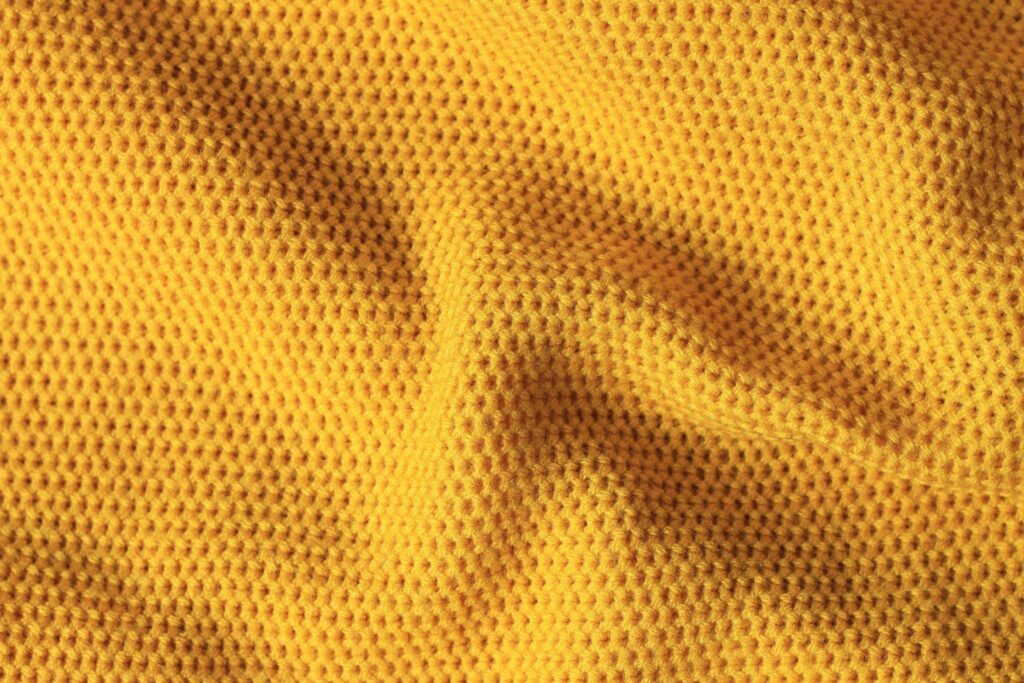
The most prevalent knit fabric type is jersey. A single needle is used to combine knit and purl stitching to create this fabric. Single or simple knit is another name for this material. Due to the obvious right and wrong sides of the cloth, this sort of knit fabric is easy to identify among others.
Basic t-shirts are frequently made using a fabric known as jersey knit. Dresses and tops with drapes fit perfectly with them as well.
Rib-Knit
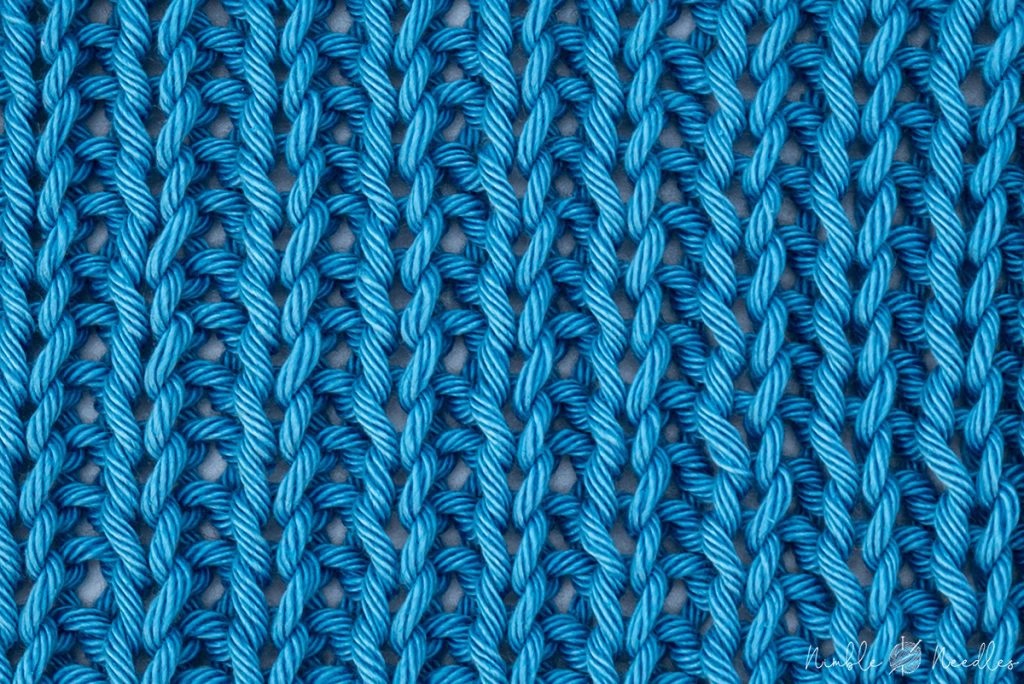
Raised vertical textured lines can be found in rib knit, often known as ribbing. Two needles with vertical textured lines on a double bed knitting machine are used to make this fabric. Because of its vertical ribs, this style of knit fabric is also easy to recognize. Based on the order of the knit and purl stitches, there are two primary forms of rib knit fabric. While the 22-rib knit has a sequence of 2 knit and 2 purl stitches, the 11-rib has a sequence of 1 knit and 1 purl stitch.
The bottom borders of sweaters, cuffs, and necklines on clothing can all be made with rib knit fabric since it is more elastic crosswise and lies flat on one side. It is also ideal for manufacturing rugs, mats, and other pieces of furniture for the home. It can be made of any fiber; we carry cotton, wool, hemp, and bamboo. We also carry rayon, modal, Tencel, and a small amount of polyester.
Interlock Knit
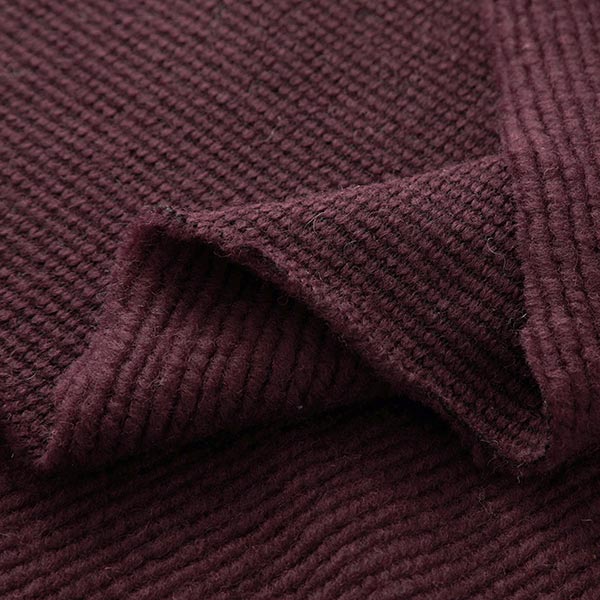
Rib knit and interlock knit are related. Due to the fabric’s creation utilizing two needles, some experts claim it is a form of ribbing. Additionally, it appears to be made of two single-knit layers stacked on top of one another. The double-faced rib is another name for this sort of knit fabric.
The interlock fabric is the ideal kind of knit fabric to use while making pants, skirts, and tanks. Any fiber is acceptable; among our selections are cotton, wool, hemp, and bamboo. Additionally, we have a small amount of polyester, rayon, modal, and Tencel.
French Fabric Knit
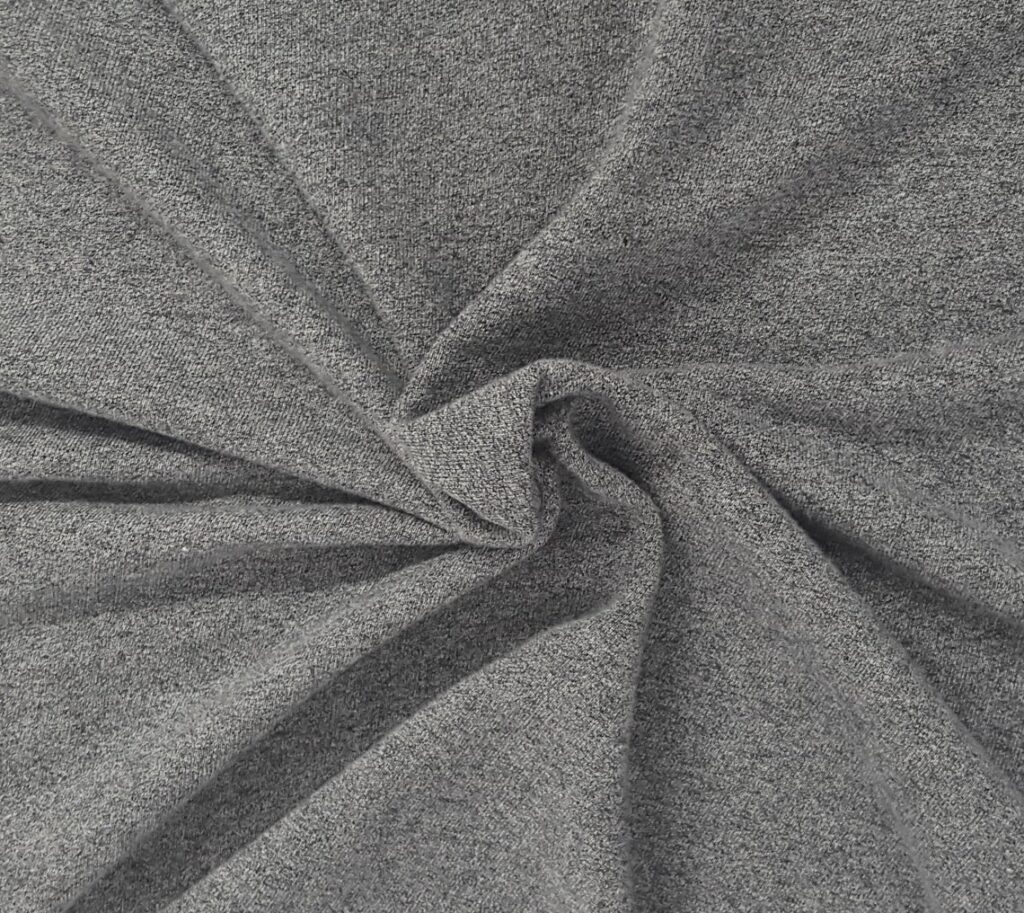
French Terry is a type of knitted terry cloth that features loops and plush heaps of yarn on one side and a smooth, velvety surface on the other (often the inside of a garment). As a result, a super-comfortable textile that absorbs sweat and is lightweight and breathable is created.
Fleece Knits
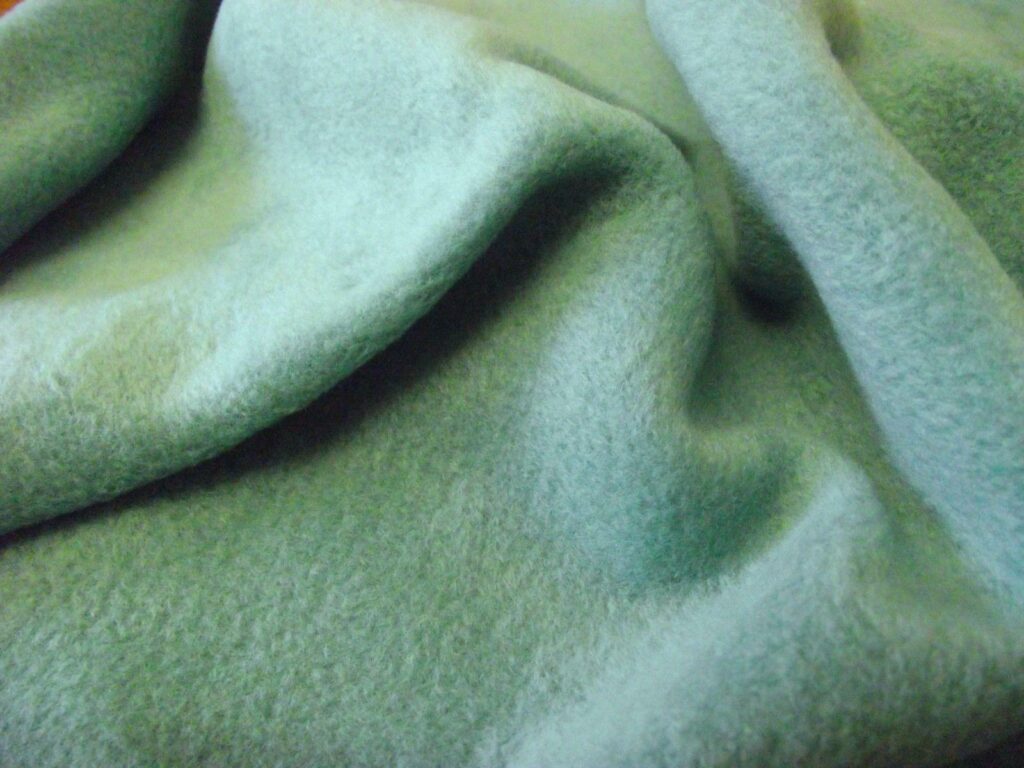
The fleece knit fabric has a deep, thick pile and is strong, warm, and stretchable. Quick-drying fleece fabric is ideal for athletic wear.
The discussion of knit styles doesn’t end here. There are so many that spandex can be added, changing the properties and applications of the fabric.
Yarn-Knit Fabric

The face and reverse loops in the purl knit structure are knitted in a different direction, which can only be done with a double-ended latch needle. The fabric has double the thickness of a single jersey. It has a distinct right and wrong side and is flexible. Due to its ease of unraveling, it is rarely used. The most popular applications for it are in knitwear, undergarments, hosiery, etc.
Raschel Knits
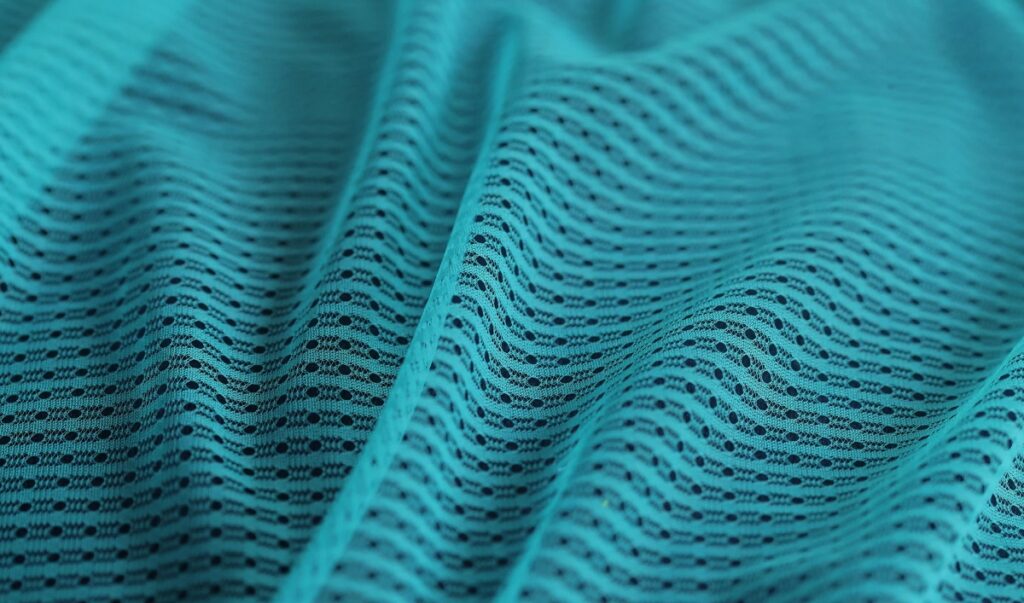
With just one set of latch needles and spun yarn. Knits might be layered, lacey, or heavily patterned. One of its qualities is a fabric that can be single-faced or reversible, open or lofty, stable or stretchy, dense or compact, open or compact, stable or stretchy, etc. Their intricate patterns serve as a good indicator. Due to the raschel machine’s tremendous degree of customization, which ranges from thin lace to thick chenille, it may be used for practically any type of garment. Fabrics with flat or tubular warp-knit patterns can be produced using machines.
Tricot Knits
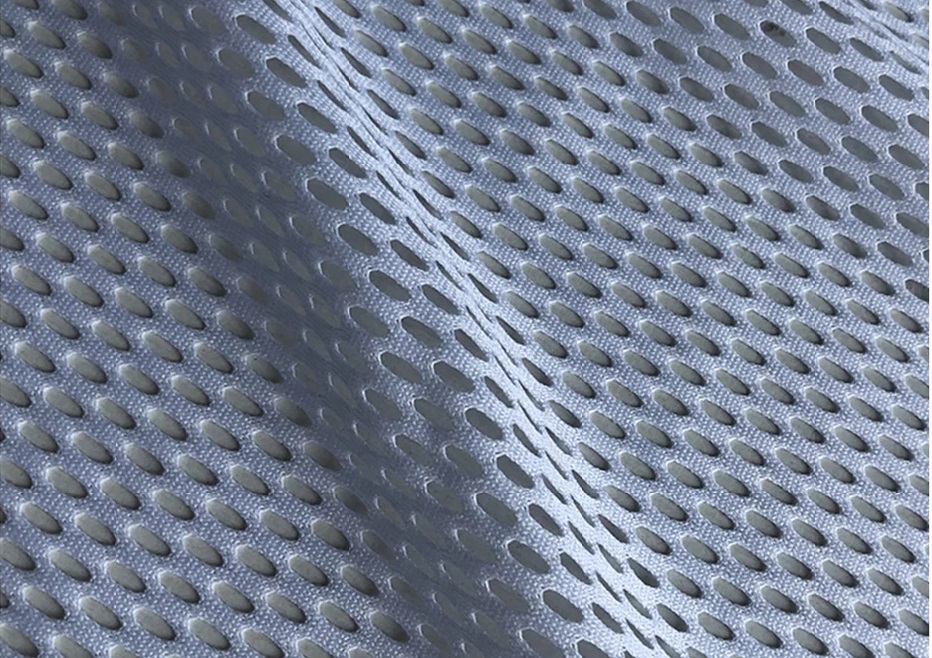
Utilizing just one set of beard needles and filament yarns, tricot knit is created. A smooth surface with a thick stitch is produced by the multifilament yarn face stitches, which are parallel to the back stitch. Because of the way it is constructed, it offers good air/water permeability, softness, wrinkle resistance, and drape. It is mostly utilized in dresses, lingerie, and other intimate apparel.
Milanese knits
Two sets of strands are knit diagonally to create Milanese knitting. On the face side, there are tiny vertical ribs, while on the back, there are diagonal lines. Most often used for gloves, it is silky, lightweight, and drapey.
There are numerous knitted fabrics manufactured with different modifications in addition to the aforementioned basic knitted fabric categories. To create velour, terry, and plush fabrics, double-looped stitches or other yarns can be used to vary the flat, flat, or jersey knit.
Purl Knits
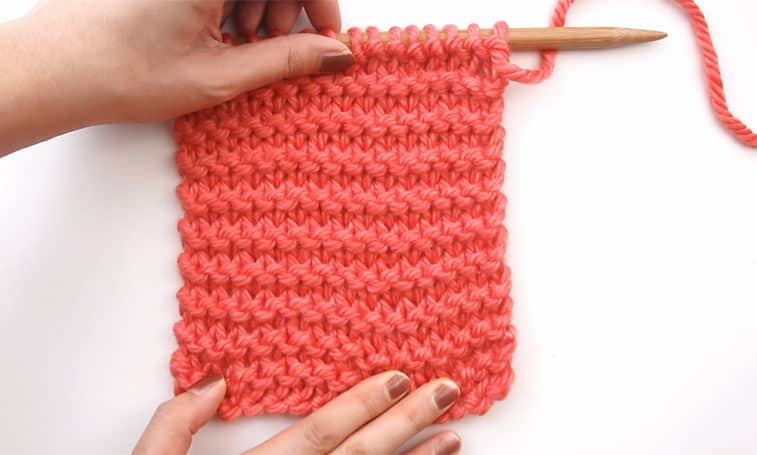
Purl knit is made by alternating knit and purl stitches. It features alternating courses and needs a double-ended latch needle to knit. Both sides of the fabric display the same purl stitch’s unique looping pattern.
Purl knits are more elastic in length than height. They can be made from a variety of fibers, although cotton, wool, and acrylic are the most common ones. Sweaters, cardigans, and children’s clothing frequently employ this style of knit fabric.
Cable Knit
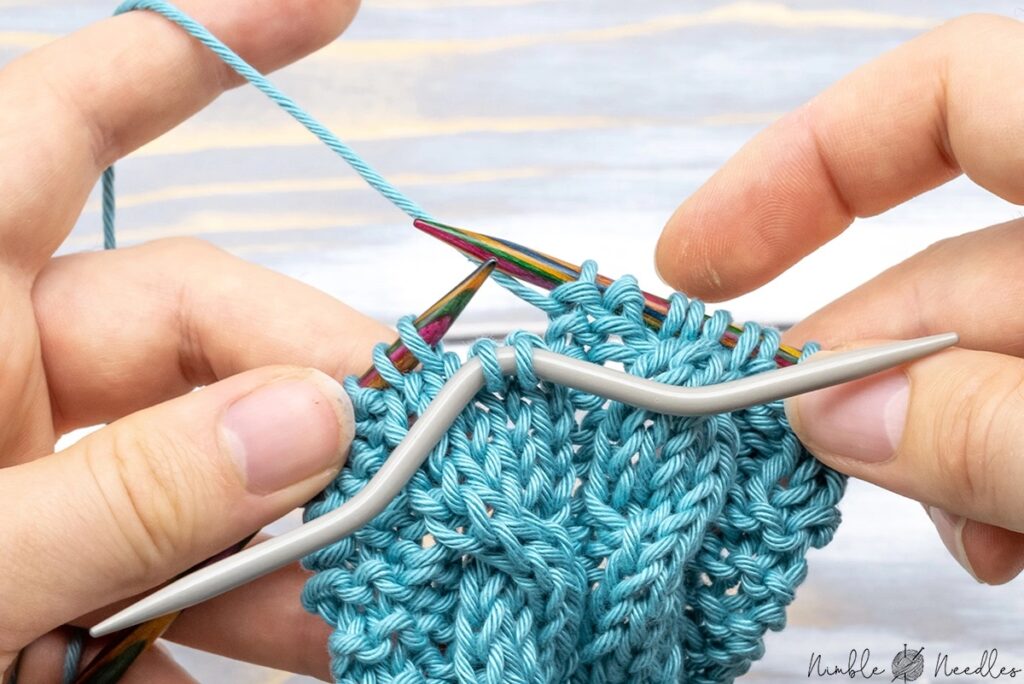
One type of cable can be used consistently throughout a pattern, or alternate multiple varieties on the same cloth, for example. Although the size of the cables themselves can vary and is dependent on the weight of the yarn, cable knits are generally thicker. Any form of fiber can be used to knit cable knits, which are most frequently seen on sweaters and cardigans of all kinds.
Handmade Knits
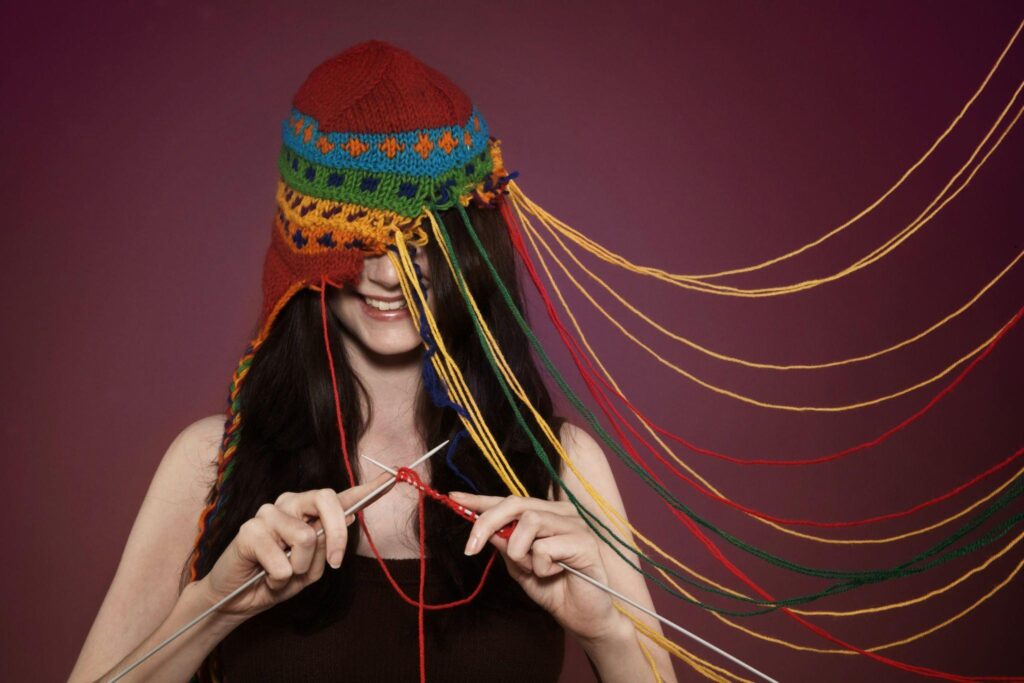
Any type of knit fabric that is produced using knitting needles, just like grandma does, is considered a handmade knit. Hand knitting can be done in a variety of ways and results in a wide range of finished items, such as bulky sweaters and vests, beanies, gloves, scarves, thick or thin gauge socks, and blankets.
Hand knitting can be done on a flat surface using two needles, in a circle with specific needles, or with numerous double-ended needles. The variation that may be achieved by hand knitting is limitless.
Silver Knit
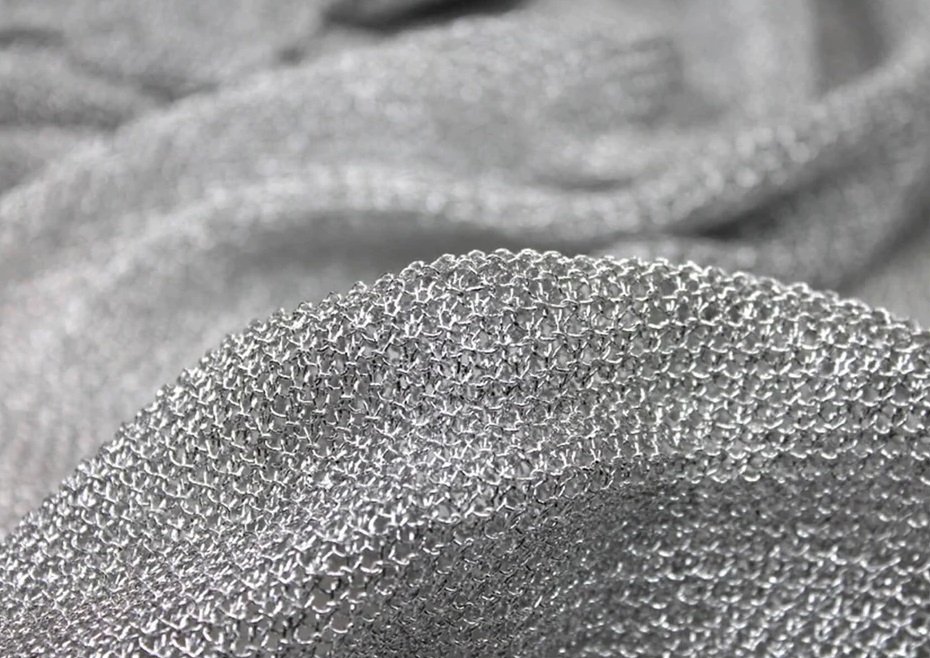
High-pile knitting, known as “silver knit,” binds lengthy, dense volumes of fibers to a thin knit background. Silver knits are always manufactured by machines and are intended to mimic the appearance of fur.
The longest and densest stacks of tiny, individual threads are used in silver knitting. The outcome can be printed to look like any type of animal fur or can be a plain color. The most common use for this material is faux fur coats, jackets, and plush, luxurious blankets.
Velour knits
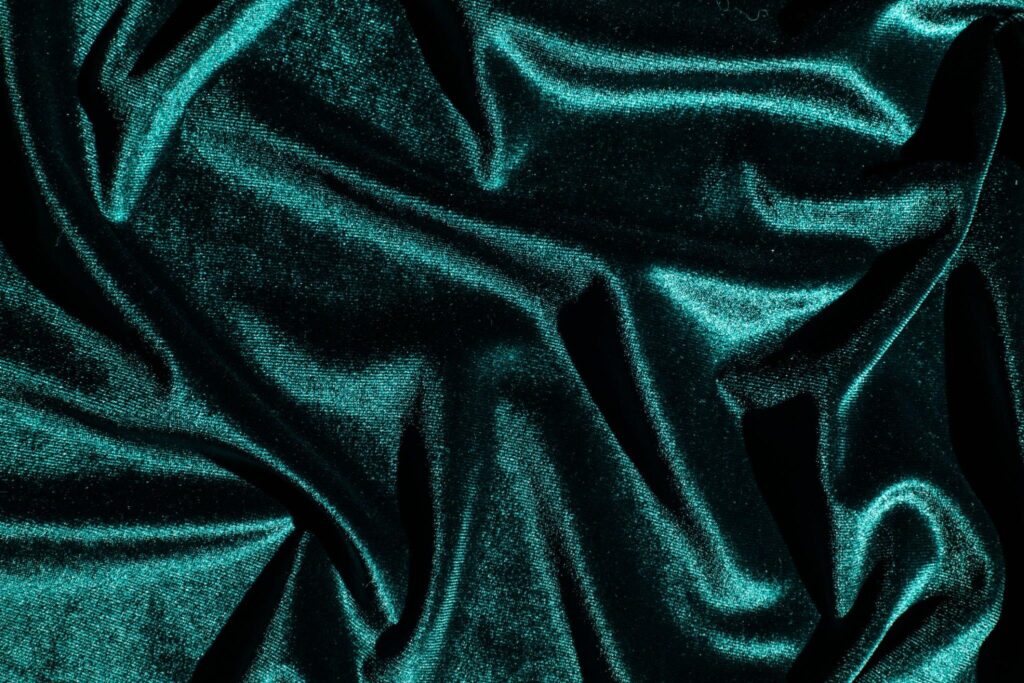
The pile loops of knitted velour are sheared and then brushed rather than being left intact, which is how terry knits are made. The surface of knit velour can resemble that of woven velvet or velour, but it will be stretchier than the woven varieties, which will be stiff.
Knitted velour can be produced using only cotton, only cotton mixes, or only synthetic fibers. The clothing and residential industries both use this kind of fabric.
Piled knits
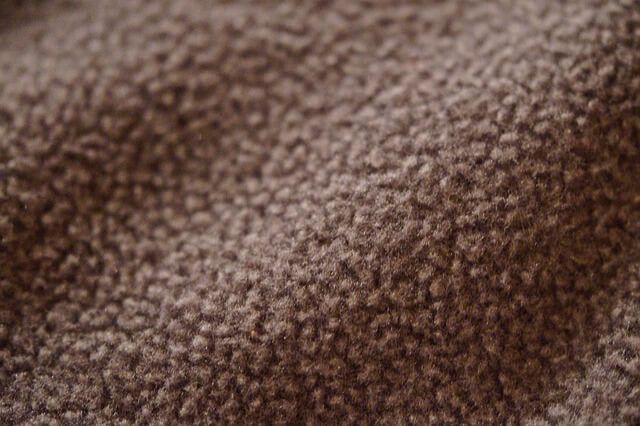
In the category of textiles known as “piled knits,” there are a few different types of fabric that all include cut or looped pile surfaces that protrude from the fabric’s base.
The piles can be cut to a variety of lengths; longer piles produce a deeper nap in the fabric, while shorter piles produce a fluffier, softer texture.
Mesh knits
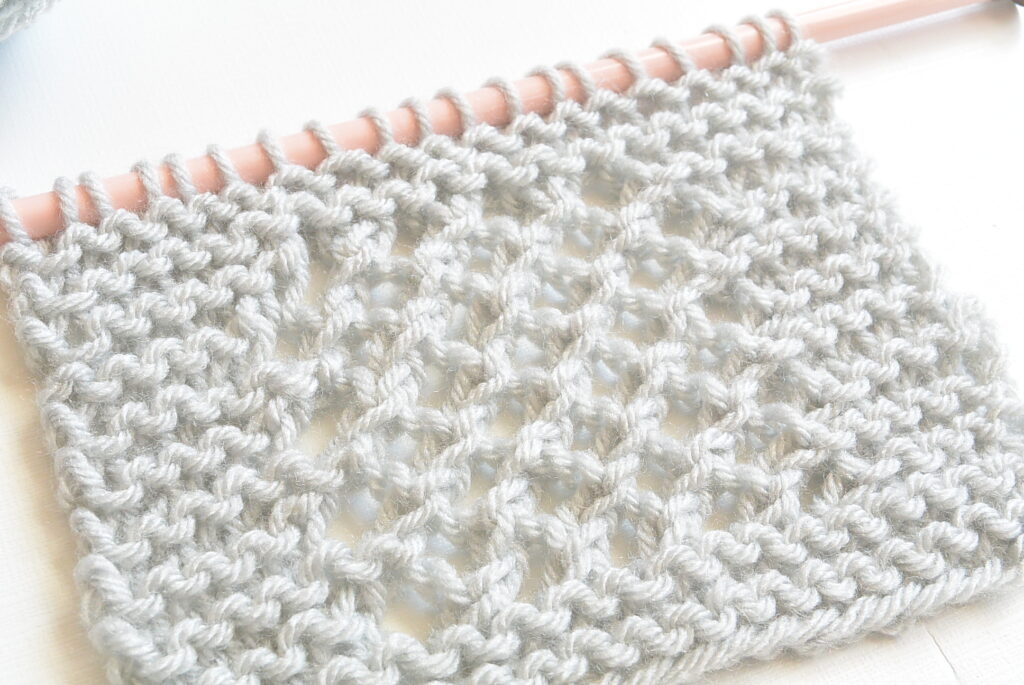
Mesh knits are made of a variety of fabrics that have openwork stitch patterns that are evenly spaced out to produce an extremely light and breathable fabric.
Many mesh knits used in commercial production nowadays are comprised of synthetic fabrics like nylon and polyester, which offer greater stretch. These synthetic mesh knits are used in a variety of professional areas, including healthcare, aviation, leisure, and automobiles.
Sweater knits
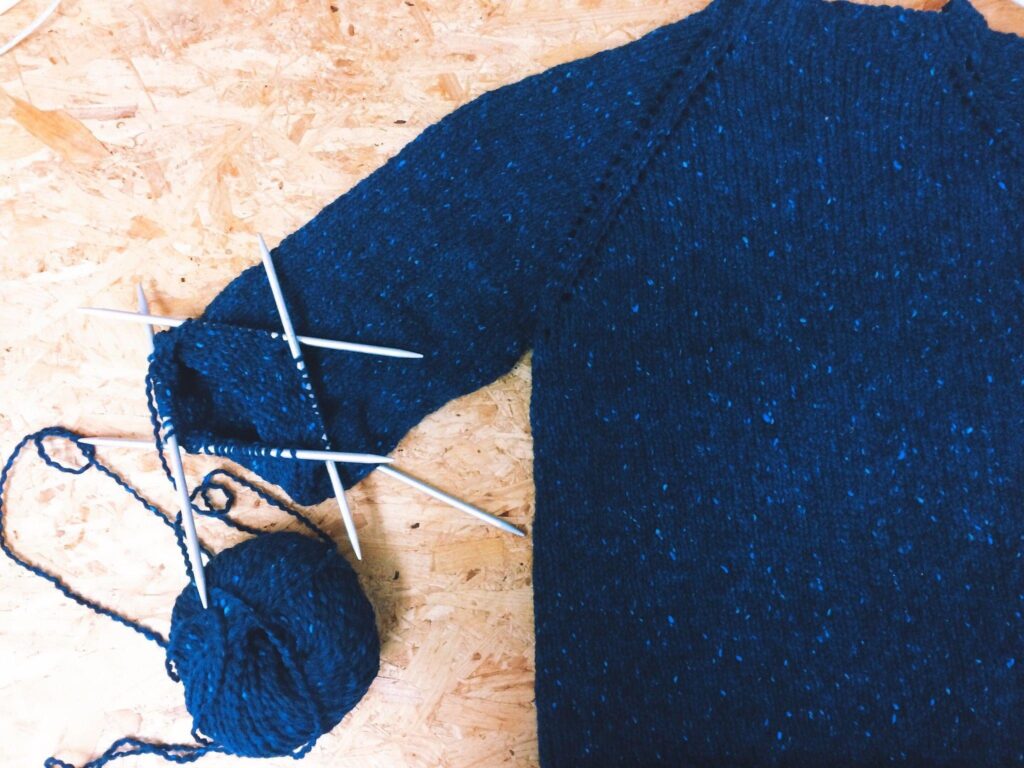
Sweater knits come in a wide range of aesthetics, from simple knitting techniques and solid colors to cables, ribs, and vibrant colors and patterns. Generally speaking, sweater knits are manufactured on a large scale by machines but are intended to approximate the appearance of hand knitting.
Sweater knits come in all different kinds of natural and synthetic fibers and can be found in fine gauge, medium gauge, or heavy gauge. Exactly as their name suggests, sweater knits are made to make sweaters without needing to hand knit each one.
Jacquard Knitting

Jacquard knits can also be made by hand, however, they are frequently a result of industrial knitting. The patterns can be large or small, done in a single color or several colors, and they are frequently intricate. Particularly when taking into account the potential blendings of design and thread color, the patterns discovered on jacquard knit fabric can differ quite a little.
A terrific option for sweaters, skirts, dresses, jackets, and leggings is jacquard knit fabric because it is highly durable.
Intarsia knitting

A single knitted garment called an intarsia knit uses a method of manipulating many colored yarns to produce patterns of various colors all over the fabric. The patterns and amount of colors used can be very different, but they will all have the same pattern on the front and back. When compared to other multi-colored knitting techniques, such as fair isle and other stranded colorwork, this is one of the distinguishing features.
Although the patterns used in intarsia knitting can be straightforward or intricate, they frequently incorporate prominent elements like stripes, striking geometric patterns, solid-colored fruit, and various kinds of florals. Typically, tops and sweaters are made with this style of yarn.
Pointelle knit
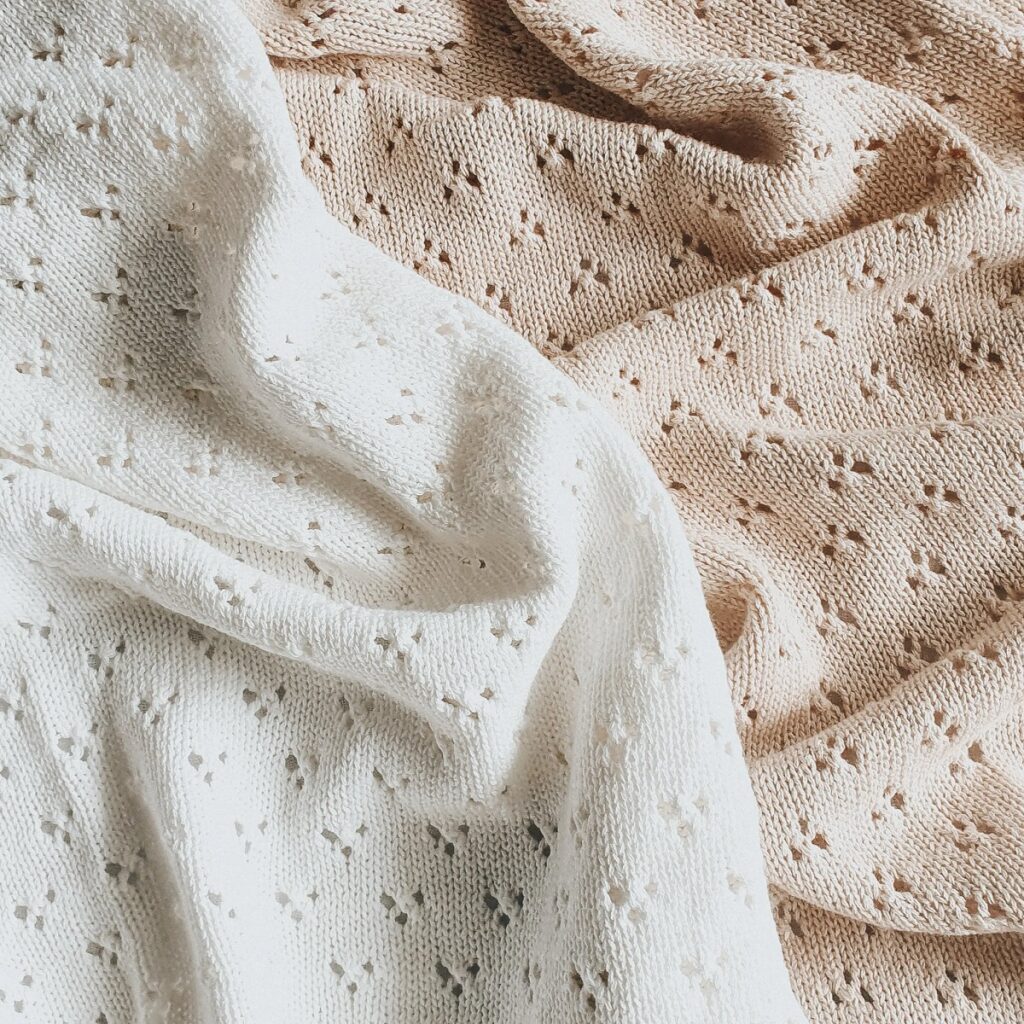
It is a thin knit fabric with modest openwork designs that are often simple geometric shapes. Wool is frequently used when knitting pointedly, however, cotton is the most popular material.
Pointelle features a delicate-looking fabric with considerable flexibility and a beautiful drape. Although it is frequently used to create shirts, this adaptable knit can also be used to create other forms of clothing, particularly if you want to give the item of clothing a modest yet striking feature.
Birdseye knits
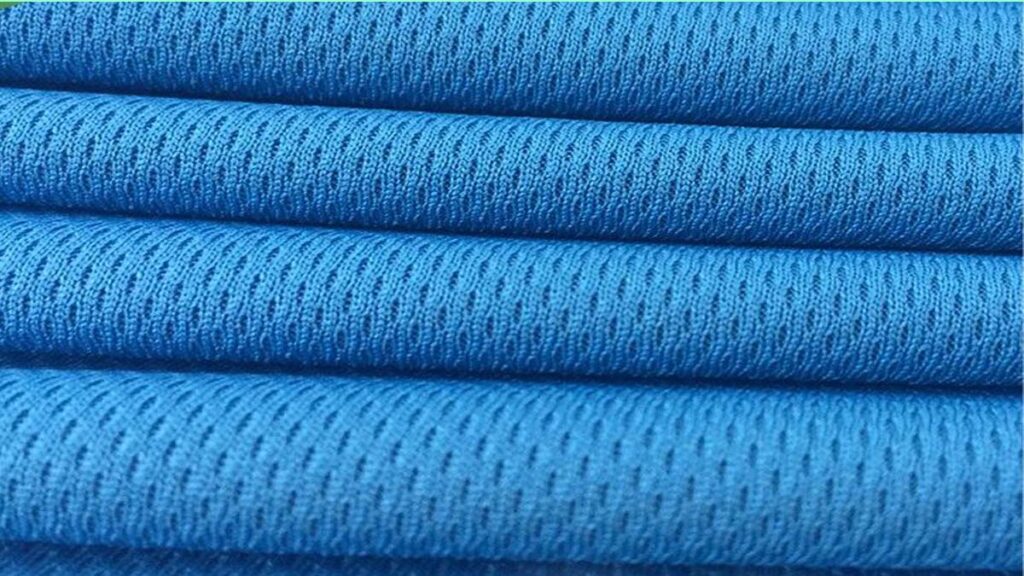
Another knit that incorporates a textured design into the fabric is called Birdseye. The pattern is composed of tiny, repeating diamonds with a depression in the middle of each one; it is said to resemble a bird’s eye.
Although numerous blends can now be used, cotton or linen was originally used to make birdseye knit. Men’s suits frequently use this subdued all-over patterned fabric since it tends to be light and breathable, especially summer suits.
What Type Of Knit Fabric Is Ideal For Dresses?
The following knit fabrics work well for dresses, depending on the style. Use ITY Knit fabric for a summer outfit that is flexible and fresh.
Ponte or Scuba knit fabric is the perfect option if you want something with more structure and volume. Now, choose Double Knit, which is wrinkle-resistant and maintains a fantastic structure, if you want a dress for something somewhat more professional, like work.
Purpose your standard Jersey Knit fabric if you are unclear about the intended use or for all of your other dresses. One of the things that give a seamstress the most joy is making a dress out of knit fabric.
This type of sewing pattern is not just incredibly simple and quick to make. However, they are also really comfy to wear.
FAQs
What Does Knit In A Fabric Mean?
One continuous fiber, such as yarn or thread, is looped repeatedly to create knit fabric, which is used to make clothing. A pattern that resembles rows of tiny braids can be seen all over a knitted garment if you look at it attentively.
What Type Of Knit Fabric Is The Softest?
The most supple and smooth of all jersey fabrics is certainly silk. These knits are delicate and thin, frequently translucent, and have a lovely silky sheen. Even though they are naturally elastic, lycra or any other elastic fibers can improve their elasticity.
Final Words
It is easy to see that knit fabrics occupy a lot more room in our lives than we might have first imagined. Knitting encompasses far more than just the garments your grandmother creates. Knitting may be used to create an incredible diversity of materials.
Knits can be found in both obvious and unexpected settings, like the healthcare and aviation sectors. The best thing about knits is that they work for any season, including my personal favorite, sweater season.
- Related: What Steps Are Involved In Making Fabric
- Related: 12 Easy Steps To How Clothes Are Made
- Related: The Process of Dyeing Fabrics: Tips, Tricks, and How-Tos


